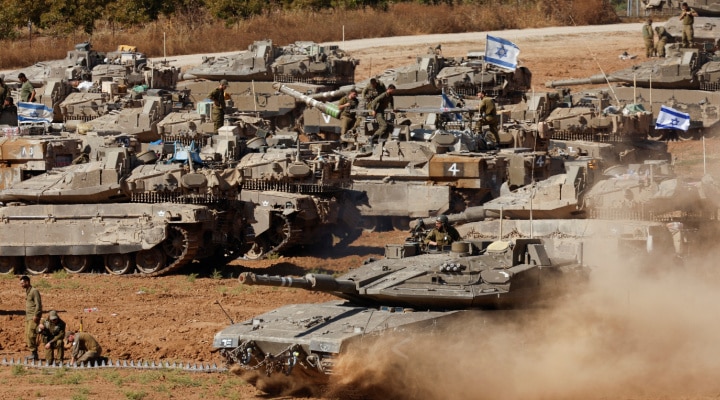Numbers are funny things.
After shouting about Israel and “genocide” — and touting Hamas’ casualty numbers with no verification and obvious flaws — the UN changed its mind this weekend. The old numbers (up to May 6, 2024) looked like this:
- 34,735 dead, including over 9,500 women and over 14,500 children. [You could, if you wished, extrapolate the number of men/terrorists, but the UN wasn’t going to help you.]
The new numbers (May 8, 2024) are:
- 24,686 people, including 10,006 men, 4,959 women, and 7,797 children
The UN blames “the fog of war.” Baloney.
There is always fog, but the UN acceptance of Hamas casualty figures led directly to South Africa’s complaint to the International Court of Justice (ICJ), accusing Israel of genocide. The ICJ declined to say there was genocide, but Israel was still smeared again across the international media.
The UN and others ignored the work of John Spencer, Chair of Urban Warfare Studies at West Point, and a follower of the nuances and statistics of Israel’s war in Gaza. He has given a master class over the past six month on evaluating military to civilian casualties in urban warfare, and the unprecedented steps that Israel took to minimize those casualties.
His numbers boil down to this:
The current (March 31) Hamas-supplied estimate of over 31,000 does not acknowledge a single combatant death (nor any deaths due to the misfiring of its own rockets or other friendly fire). The IDF estimates it has killed about 13,000 Hamas operatives, which would mean some 18,000 civilians had died, a ratio of roughly 1 combatant to 1.5 civilians. Given Hamas’ likely inflation of the death count, the real figure could be closer to 1 to 1. Either way, the number would be historically low for modern urban warfare.
According to other sources, Spencer notes, civilians usually account for 80-90 percent of casualties, or a 1:9 ratio, in modern war (though this does mix all types of wars). In the 2016-2017 Battle of Mosul, the AP reported some 10,000 civilians were killed compared to roughly 4,000 ISIS terrorists.
How did it happen that theoretically neutral/reliable sources including the AP, Reuters, NPR, the UN itself swallowed those blatantly false Hamas numbers whole and ignored an actual expert in the field?
Oxfam reported that the death rate in Gaza was higher than any other major conflict in the 20th century.
On October 7, Hamas and its friends entered Israel and killed 1,163 people — a verified number. The victims included a baby who died 14 hours after birth, and a 94-year-old woman. The world was horrified by the numbers and the manner of their death, which included rape, torture, and the burning of people alive.
The world was similarly horrified to discover that 240 people, including Americans, had been dragged into Gaza — most living but some already dead.
Israel’s initial military response was met with a degree of understanding around the world.
Hamas had a dilemma — but also a war strategy to turn the tables.
Having built its military infrastructure under streets, houses, schools, mosques, and UNRWA facilities, Hamas was assured that Israeli action to clear those spaces of terrorist operatives would kill the human shields sitting above. (Especially after Hamas warned Gazans not to flee and fired on Palestinian civilians using the “safe passage” route.)
In fact, Hamas planned it that way. The more civilians that died, the more Israel would be seen as an out-of-control monster, killing the defenseless in retribution. Committing “genocide.”
And Hamas’ strategy worked.
The first big test was at the Al-Ahli Hospital, where an explosion killed people outside the building. The Gaza Health Ministry (run by Hamas) claimed 500 dead from an Israeli air strike on a protected site. Media around the world went with it. Later evidence showed it was caused by an errant Palestinian rocket aiming for Israel, and that the casualty figure was closer to 50 than 500.
At that point, the “narrative” changed: “I don’t think the question will ever get fully resolved using open source intelligence,” an assistant professor of political science opined. If actual evidence won’t let you blame Israel and politics won’t let you blame Hamas, best to call it foggy and move on.
That’s how it worked. And the numbers caused the flood.
In January, it was the ICJ.
In February, President Biden said Israel’s response was “over the top,” and began to institute sanctions on individual Israelis and Israeli companies that he intimated were only the beginning.
And, indeed, in May, as Israel geared up for the Rafah battle, the administration announced the withholding of weapons already approved for delivery by Congress. There was also the blackmail/bribe strategy of offering Israel intelligence information if it would limit its incursion. The UN vote elevating Palestinian status was likely a way member states could slap at Israel without repercussions.
Israel is likely to do what it has to do to defend its people. The UN through UNRWA has already shown itself to be an accessory to Hamas and a participant in Hamas war crimes — both in Israel and against its own people. Later, when the “fog of war” dissipates, and the outcomes are closer to the John Spencer model than the Hamas model, the UN should find itself in the dock.
The number change is an attempt to deflect its guilt.
Shoshana Bryen is Senior Director of The Jewish Policy Center and Editor of inFOCUS Quarterly.
View this Algemeiner Report from May 14th

